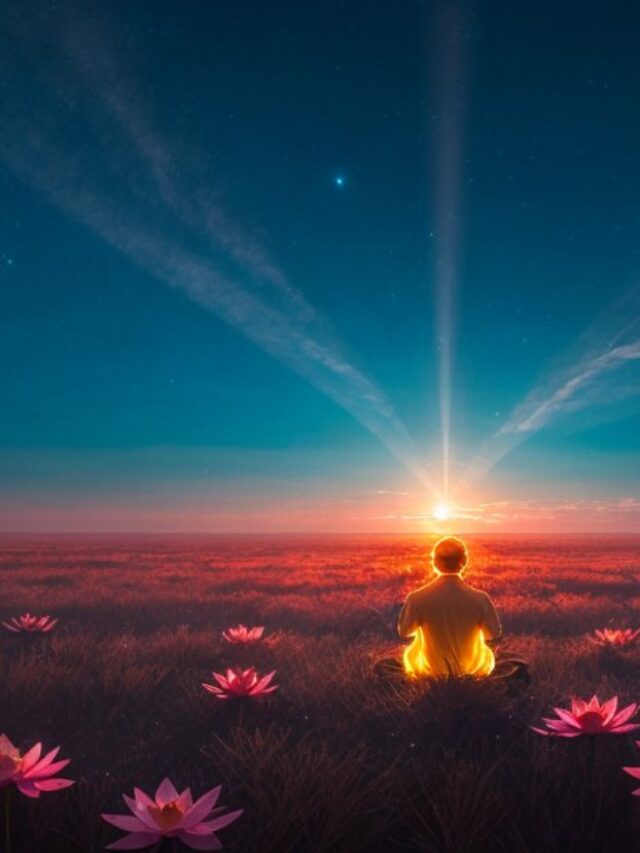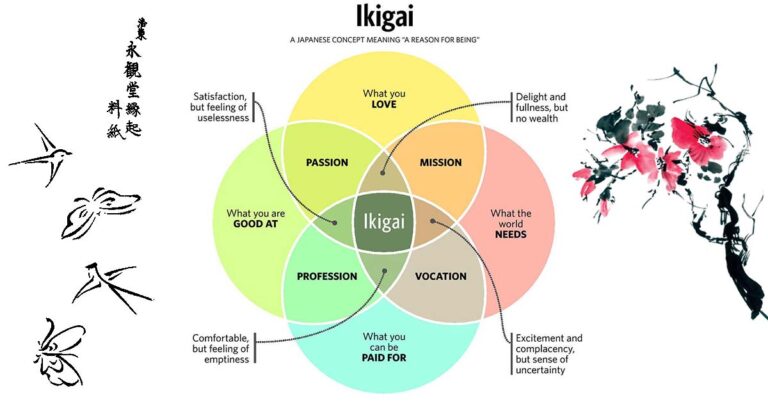Introduction
Classic Indian philosophy is a vast and intricate tapestry of thought, encompassing a multitude of philosophical schools and ancient wisdom that has shaped the understanding of human existence for millennia. Among the profound topics explored within this philosophical tradition, emotions hold a significant place. Emotions, being an integral aspect of the human experience, are not only recognized but also deeply analyzed and understood in the context of Classical Indian Philosophy. In this article, we embark on a journey to explore the profound insights that various philosophical schools offer on the nature, significance, and management of emotions.
I. Foundations of Classical Indian Philosophy
To grasp the understanding of emotions in Classical Indian Philosophy, one must first comprehend the foundations upon which this philosophical edifice is built. The diverse schools, such as Nyaya, Vaisheshika, Sankhya, Vedanta, and others, elucidate the core concepts of Dharma (duty/righteousness), Karma (action and its consequences), and Moksha (liberation). These foundational principles lay the groundwork for comprehending the intricate relationship between emotions and human existence.
II. Emotions in Vedic Scriptures5 Primary Emotions: Love, Hatred, Joy, Fear, and Sorrow
The Vedic scriptures, the oldest texts in the Indian tradition, provide significant insights into the recognition and significance of emotions. The Vedas acknowledge the range of human emotions and their connection to rituals and sacrifices. Emotions are not viewed as mere impediments but are rather an essential aspect of these sacred practices, enabling a deeper connection with the divine.
III. Sankhya Philosophy: Understanding the Nature of Emotions
Sankhya philosophy, a prominent dualistic school, postulates the existence of two fundamental entities – Prakriti (nature) and Purusha (consciousness). Within this framework, emotions arise from the interactions between these two entities. Understanding the origin and manifestation of emotions through the lens of Sankhya offers profound insights into the human psyche.

IV. Nyaya-Vaisheshika Perspectives on Emotions
The Nyaya and Vaisheshika schools employ rigorous methods of logical analysis to comprehend emotions. By exploring emotional experiences through perception and inference, these schools categorize the mind’s various emotional states into sixteen mental conditions. This systematic approach sheds light on the complexities of emotions and their interplay with cognition.
V. Yoga Philosophy: The Journey to Emotional Equanimity
Yoga, a holistic system of spiritual and physical practices, provides techniques to regulate and transcend emotions. By addressing the Pancha Kleshas (five afflictions) – ignorance, egoism, attachment, aversion, and fear of death – Yoga aims to achieve emotional equanimity and self-realization.
VI. Mimamsa Philosophy and Emotions
Mimamsa philosophy, which primarily concerns itself with the interpretation of Vedic rituals, recognizes the emotional significance of these rituals. Emotions are seen as catalysts for ethical actions, propelling individuals to fulfill their duties in harmony with cosmic order.
VII. Emotions in Vedanta: Illusion and Liberation
Vedanta, a school that emphasizes the non-dual nature of reality, delves into the Maya (illusion) of emotions. Emotions, often stemming from the illusion of individuality, can bind individuals to transient realities. Vedanta offers a path to liberate oneself from these emotional bonds and attain ultimate freedom.
VIII. The Aesthetics of Emotions: The Concept of Rasa
In Indian aesthetics, the concept of Rasa – the essence or flavor of emotions – plays a pivotal role in artistic expressions. Understanding the profound connection between emotions and artistic performances unveils the transformative power of emotions in the realm of art.
IX. The Bhakti Movement: Emotions as a Path to Devotion
The Bhakti movement, a devotional movement, centers on embracing emotional devotion (Bhakti) as a means of connecting with the divine. Through various practices, devotees experience profound emotional connections with their chosen deities.
X. Ahimsa (Non-violence) and Emotional Harmony
In Jain philosophy, Ahimsa (non-violence) is a fundamental ethical principle. By practicing non-violence in thoughts, words, and actions, individuals can cultivate emotional equanimity and harmony within themselves and the world around them.
XI. Buddhist Insights on Emotions
Buddhism, with its profound understanding of impermanence and suffering, offers unique perspectives on emotions. Through mindfulness and meditation, practitioners learn to transform negative emotions into sources of insight and compassion.
XII. Emotions in Classical Indian Literature and Epics
Ancient Indian texts and epics richly depict emotional experiences of various characters. These narratives not only reflect human emotions but also provide profound lessons and insights on the human condition.
XIII. Emotions in Indian Classical Music and Dance
Indian classical music and dance, infused with emotional depth and expression, have the power to evoke a myriad of emotions in both performers and audiences. This artistic domain serves as a testament to the potency of emotions in creative expressions.
XIV. The Poetic Language of Emotions
Classical Indian poetry employs intricate symbolism and imagery to capture and convey a diverse range of emotional states. These poetic expressions provide a nuanced understanding of emotions and their place in human life.
XV. The Mind-Body Connection in Managing Emotions
Ayurveda, the ancient system of medicine, emphasizes the mind-body connection in managing emotions. By balancing doshas (energies) and adopting specific practices, individuals can attain emotional stability and overall well-being.
XVI. Applying Ancient Wisdom to Modern Times
The timeless wisdom of Classical Indian Philosophy continues to hold relevance in the modern world. Integrating emotional intelligence based on these profound insights can lead to personal growth, fostering a balanced and fulfilling life.
Concept of Emotions in Indian Classics
In the realm of Classical Indian Philosophy, the understanding of emotions goes beyond mere fleeting sentiments. It delves deep into the intricate interplay of the human psyche, exploring emotions through various lenses like the Rasa theory in Indian aesthetics.
At the core of this philosophical exploration lies the concept of Vedanā, the array of feelings and sensations that color our experiences. These emotions arise from the interplay of rationality, representational thoughts, and Vijñāna, the discerning intellect.
Love or Attraction (Rāga) and Hatred or Aversion (Dveṣa) are emotions that shape the human experience. Joy (Harṣa) and Fear (Bhaya) evoke responses that guide our actions. Saṃvedana, the ability to feel, and Sukha-saṃvedana, the experience of pleasure, intertwine with our Doṣas or mental constitutions.
The mind (Citta) and intellect (Vijñāna) are the instruments through which emotions manifest. They interact with the Puruṣa or individual consciousness and Prakṛti or universal nature. The Gunas (Sattva, Rajas, Tamas) influence the Kleśas, the afflictions that obstruct liberation.
In this intricate web of emotions, difference, egoism, attachment, and ignorance are formidable challenges. Yet, the path to liberation lies in recognizing and understanding these upadhā or colourings of consciousness.
Vyāsa or desire and the transient nature of the changing world contribute to our emotional experiences. Embracing the empty nature of emotions and thoughts allows us to reveal the truth hidden beneath the mistakes of perception.
In conclusion, Classical Indian Philosophy presents a profound exploration of human emotions, paving the way to a deeper comprehension of the self and the world. By understanding and transcending the complex web of emotions, one can embark on a transformative journey towards liberation and true wisdom.
Conclusion
In wrapping up, emotions emerge as a crucial element within Classical Indian Philosophy, contributing significantly to a profound understanding of human existence and spirituality. The in-depth exploration of emotions across diverse philosophical schools imparts valuable lessons for attaining emotional harmony and leading a meaningful life. Embracing the wisdom of ancient teachings enables individuals to navigate the intricacies of emotions and find profound purpose on their journey towards self-realization and liberation.
The human emotions test serves as a valuable tool in this introspective journey, shedding light on the intricate interplay between our feelings and behavior. Our brain, the control center of our emotions, thoughts, and cognition, orchestrates a complex symphony of neural processes that shape our emotional responses. The field of psychology and perception delves deeply into the intricacies of human emotions, unveiling the mechanisms behind our emotional experiences.






